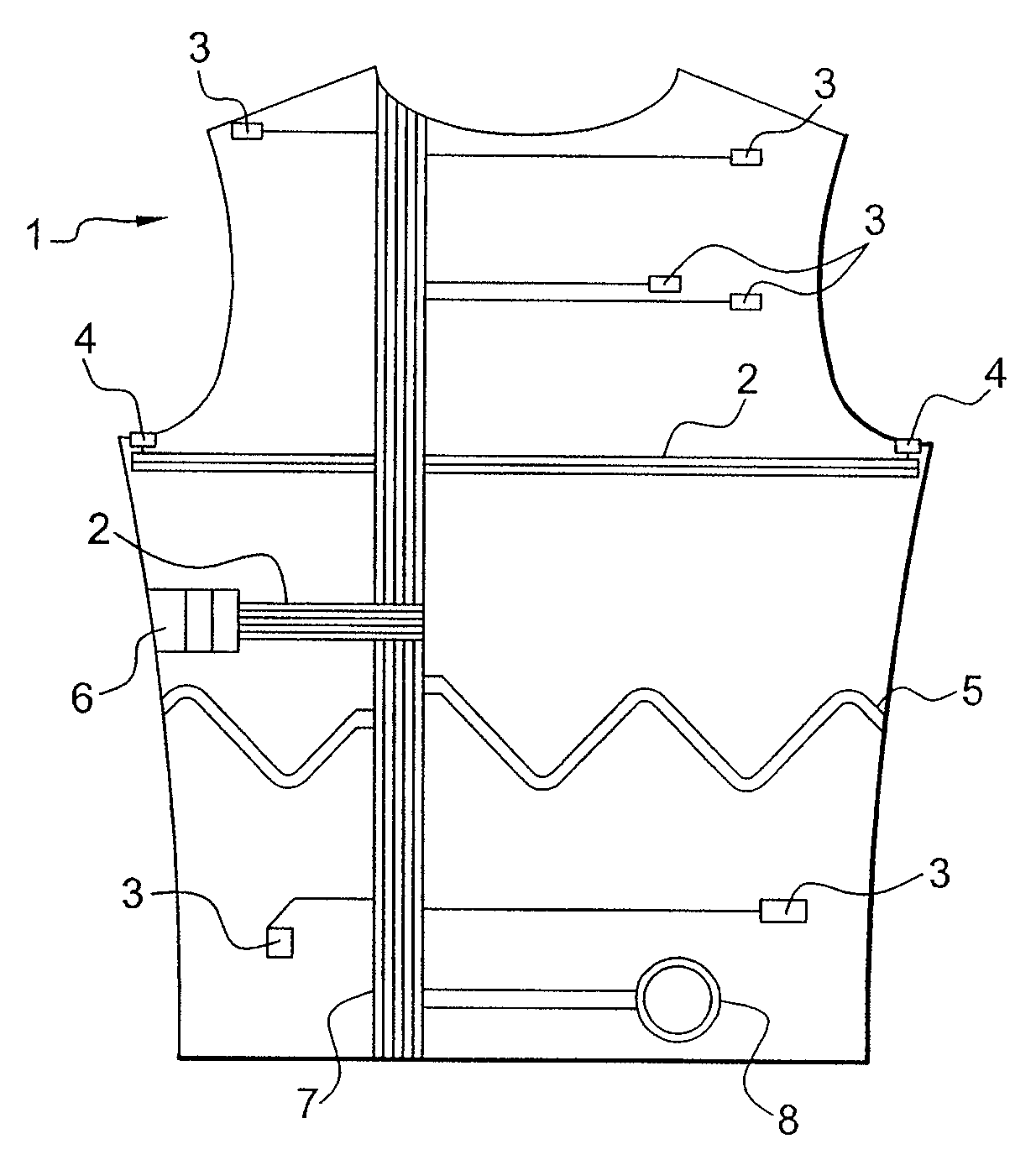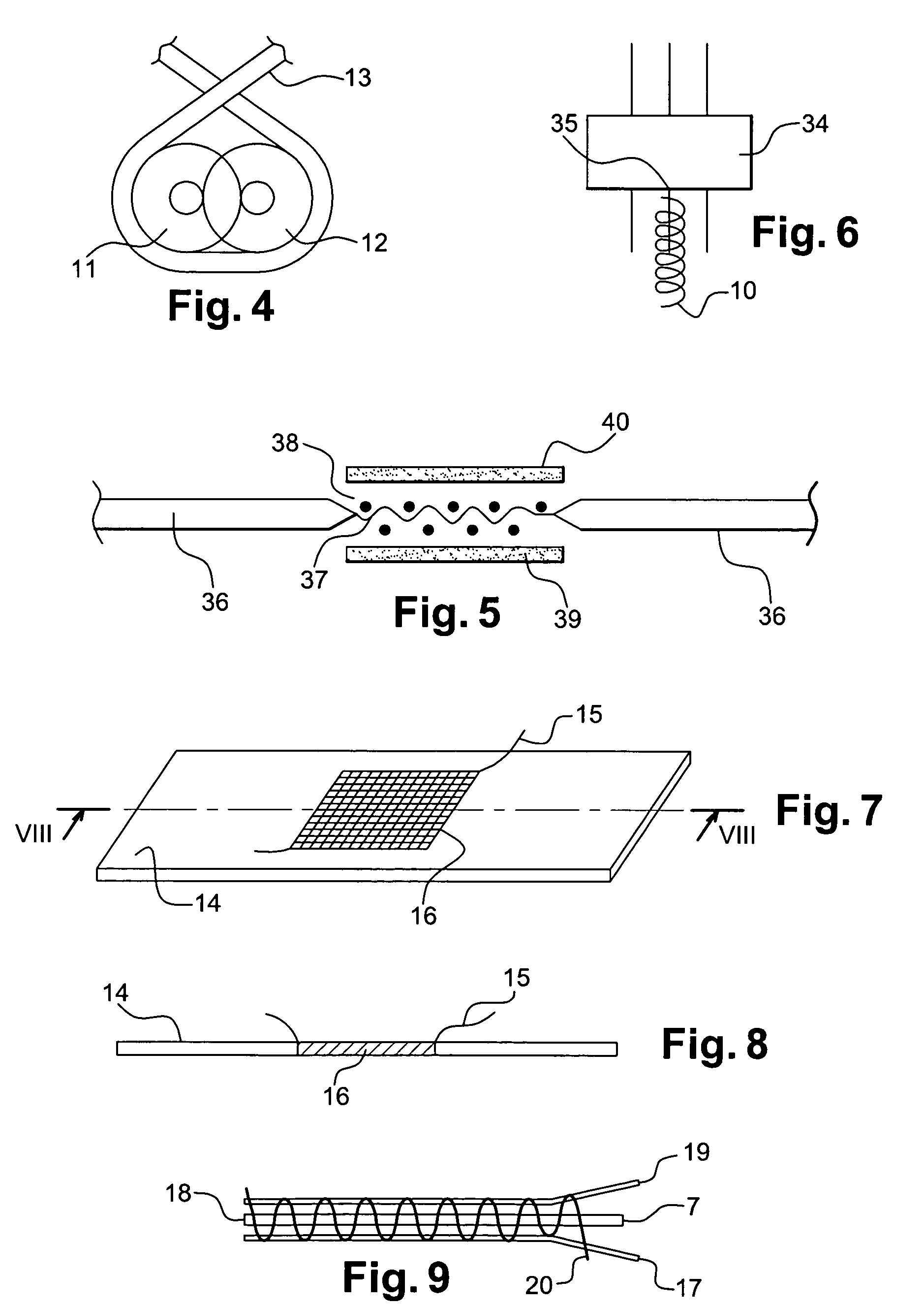Garment for the medical monitoring of a patient
a technology for medical monitoring and garments, applied in ornamental textile articles, knitting, applications, etc., can solve the problems of skin reaction and need to be periodically changed, heavy or bulky power supply means (generally batteries), and bonded electrodes are therefore not suitable for the above mentioned patients, so as to achieve flexibility and elasticity.
- Summary
- Abstract
- Description
- Claims
- Application Information
AI Technical Summary
Benefits of technology
Problems solved by technology
Method used
Image
Examples
Embodiment Construction
[0026]FIG. 1 is a front view of an undergarment 1 (shown without sleeves) made of a fabric into which electrically insulated conducting yarns are integrated, some of the wires being grouped together in bands or ribbons 2 and 7. The garment 1 includes here a data transmission and power supply bus 7 of a type conventional in electronics (such as, for example, the I2C “fieldbus”), the bus being connected to a loop 8 which is an inductive coupling coil allowing power and / or data to be transmitted to a nearby coil (not shown and not forming part of the garment) which is not in direct contact with the garment.
[0027]The sensors integrated into the garment comprise, for example, ECG electrodes 3, temperature probes 4, means 5 for measuring change in the thoracic perimeter and an activity or position sensor 6.
[0028]The undergarment is made of a woven or knit consisting of non-conducting elastic yarns, for example of the type sold under the brand name ELASTANE by DuPont de Nemours, which ensu...
PUM
| Property | Measurement | Unit |
|---|---|---|
| Electrical conductivity | aaaaa | aaaaa |
| Power | aaaaa | aaaaa |
| Mechanical properties | aaaaa | aaaaa |
Abstract
Description
Claims
Application Information
 Login to View More
Login to View More - R&D
- Intellectual Property
- Life Sciences
- Materials
- Tech Scout
- Unparalleled Data Quality
- Higher Quality Content
- 60% Fewer Hallucinations
Browse by: Latest US Patents, China's latest patents, Technical Efficacy Thesaurus, Application Domain, Technology Topic, Popular Technical Reports.
© 2025 PatSnap. All rights reserved.Legal|Privacy policy|Modern Slavery Act Transparency Statement|Sitemap|About US| Contact US: help@patsnap.com



